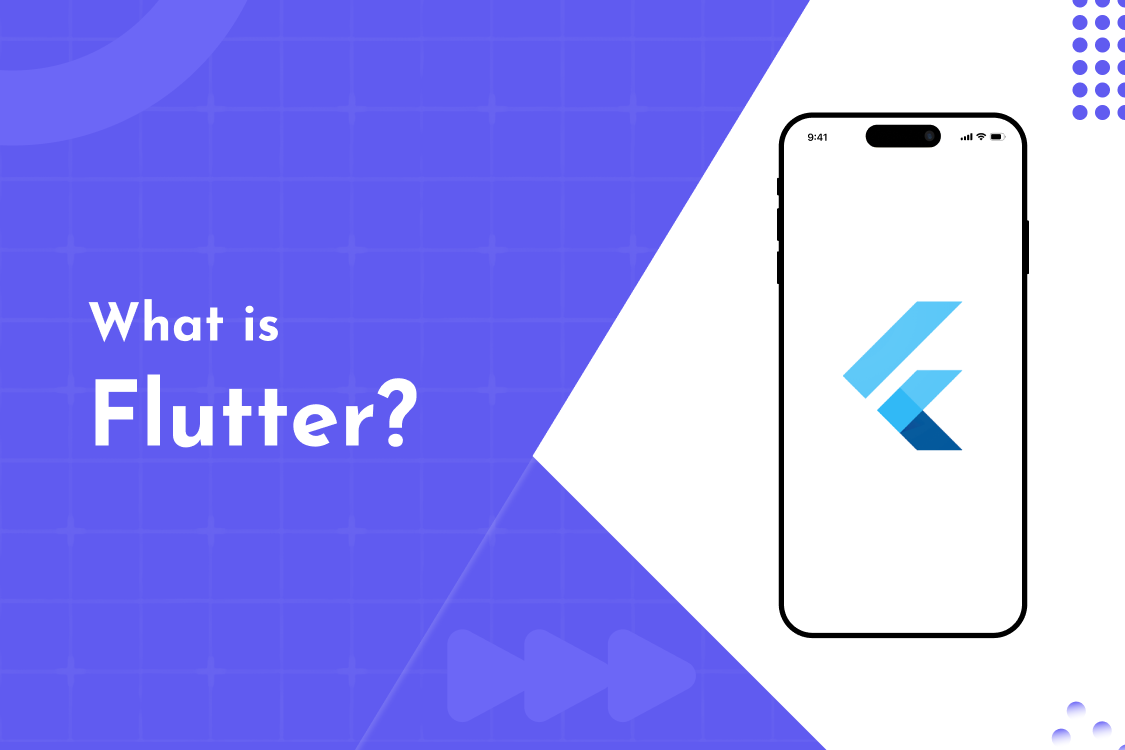Interested to work with our company? Let's get in touch!
We love to hear from you about your project.
We love to hear from you about your project.

Are you looking to build apps for both Android and iOS without the hassle of writing separate code for each? Well, Flutter might just be the solution you’re looking for. In this blog post, we’ll break down what Flutter is, its key features, and how it’s changing the game for mobile app development.
Flutter is an open-source software development kit (SDK) created by Google. It allows you to build apps for multiple platforms using a single codebase. With Flutter, you can create natively compiled applications for mobile (iOS and Android), web, and even desktop, all from one codebase.
One of the biggest advantages of Flutter is the ability to write your code once and deploy it across multiple platforms. Instead of building separate apps for iOS and Android, you only need to write one set of code, saving you time and effort in the long run. This makes Flutter an attractive choice for startups and companies that want to reach a wider audience without doubling their development efforts.
The most notable feature of Flutter is its ability to build apps for iOS, Android, web, and desktop from a single codebase. This greatly simplifies the development process, especially when you need to launch your app on multiple platforms quickly.
Flutter’s “hot reload” feature allows developers to see changes instantly without restarting the app. This speeds up the development process, as you can quickly tweak your UI and see the changes in real-time, making it easier to experiment and iterate.
Flutter compiles directly to native code, meaning apps built with Flutter run efficiently on both Android and iOS devices. The framework also uses the Skia graphics engine to render UIs, ensuring smooth animations and responsiveness, even for graphics-heavy applications.
Flutter comes with a wide variety of built-in widgets that allow you to create beautiful and highly customized UIs. Whether you want to build a simple layout or a complex, interactive design, Flutter provides the flexibility to customize every aspect of the user interface.
Since Flutter is an open-source framework, it’s backed by a growing community of developers and contributors. The official documentation is comprehensive and easy to understand, which makes getting started with Flutter a lot easier. Plus, there’s a vast number of resources and tutorials online to help you learn and troubleshoot as you go.
You can develop apps for multiple platforms with a single codebase, which significantly reduces time and costs.
With Flutter, you have full control over the UI, enabling you to create stunning designs and smooth animations that feel native.
The hot reload feature speeds up development, helping you push out features faster and launch apps in less time.
Since Flutter compiles directly to native ARM code, your app will run faster and more smoothly compared to other cross-platform frameworks.
For startups and small businesses, Flutter offers a cost-effective solution to building high-quality apps without breaking the bank.
One downside to Flutter is that it can result in larger app sizes compared to other native apps, which could be a concern if you’re targeting users in areas with limited internet access or where storage space is a premium.
Although Flutter is rapidly growing, it doesn’t yet have the vast number of third-party libraries that frameworks like React Native offer. This means that some platform-specific functionality might require additional effort to implement.
Flutter uses Dart as its programming language. While Dart is easy to learn, especially for developers familiar with object-oriented programming languages, it might require a learning curve for those used to other languages like JavaScript or Java.
Getting started with Flutter is straightforward, and it comes with detailed setup instructions on the official Flutter website. You’ll need to install Flutter SDK, choose your preferred IDE (Android Studio, VS Code, etc.), and start building your first app. Flutter also provides sample projects and tutorials to help you get started quickly.
Flutter is used to build mobile apps for iOS, Android, and even web and desktop apps with a single codebase. It’s great for developers looking for fast development and high performance without writing separate code for different platforms.
Flutter offers superior performance because it compiles directly to native code. It also allows for more customization of UIs. However, React Native has been around longer and has a larger ecosystem. The best choice depends on your specific project needs.
Yes, Flutter uses Dart as its programming language. If you are familiar with object-oriented programming languages like Java or JavaScript, learning Dart will be relatively easy.
Yes, Flutter is open-source and completely free to use for both personal and commercial projects.
Yes, one of the main advantages of Flutter is that it allows you to build apps that work seamlessly on both iOS and Android from a single codebase.
Flutter is revolutionizing the way developers approach cross-platform app development. With its ability to write once and deploy anywhere, fast development cycle, high performance, and beautiful UIs, it’s no wonder that Flutter has gained such popularity among developers and businesses alike. Whether you’re building a simple mobile app or a complex web app, Flutter offers the tools you need to bring your ideas to life.
If you’re ready to get started with Flutter, there’s no better time than now. Dive into the official Flutter documentation, explore some tutorials, and start creating your own cross-platform app today!
Note: Give us a call or leave a message, we endeavour to answer all enquiries within 24 hours on business days.
We love to hear from you about your project.
If you want to get a free consultation without any obligations, fill in the form below and we’ll get in touch with you.